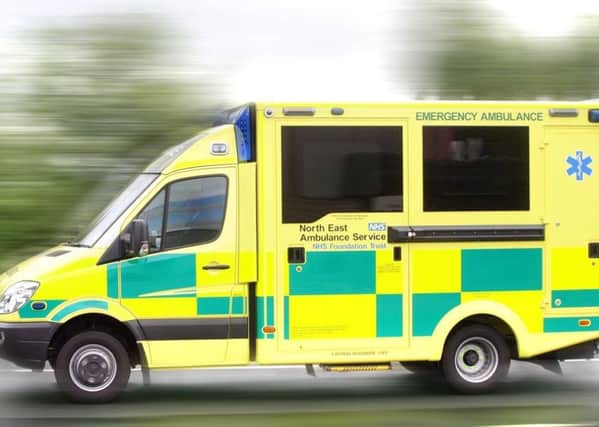Ambulance service's pledge to tackle '˜unacceptable' waits


The North East Ambulance Service (NEAS) says it recognises that the times some people are waiting for help is “unacceptable”.
The issue is one of four top priorities for the ambulance trust for 2017-18.
Advertisement
Hide AdAdvertisement
Hide AdOfficials from the service outlined their plans to Hartlepool’s Audit and Governance Committee which scrutinises health services.
Debra Stephen, NEAS deputy director of quality and safety told councillors that all ambulance services have seen response times worsen over the last 18 months because of increased demands, travel times and staff pressures.
She said: “We’re really mindful of that so as one of the priorities we really wanted to look at those long waits and make sure we have got an escalation plan internally where patients are waiting.
“We have invested in extra clinicians in our emergency operations centre who oversee call handling and also dispatch of our ambulances, and look at the process in which we can try and reduce those long waits.
Advertisement
Hide AdAdvertisement
Hide Ad“We have looked at doing clinical reviews of those delays to identify whether there is any harm and put some actions in place.
“It is a complex role in relation to dispatch of ambulances so were cognizant of that but we want to do more.”
Ms Stephen said a new dashboard that pulls together a host of information to provide real-time feedback of how the service is performing is due to be brought in soon.
Another of the service’s priorities will be continued work around early identification and treatment for sepsis.
Advertisement
Hide AdAdvertisement
Hide AdIn 2016, there were an estimated 150,000 cases of the life-threatening condition that can occur as part of the body’s reaction to infection.
It claims around 44,000 deaths a year, more than bowel, breast and prostate cancer combined.
Over 80% of eligible ambulance service staff have undergone training to recognise sepsis early.
Looking ahead, it plans to do more to develop tools to help recognise the condition in children and pregnant mums.
Advertisement
Hide AdAdvertisement
Hide AdThe committee were also presented with details of a new ambulance response system it has introduced which replaces previous targets and times with new categories.
Vicky Pout, deputy chief operating officer, said NEAS is the best performing trust for responding to the most life-threatening calls.
Ambulances for such calls should reach the patient within seven minutes.
NEAS also assured the committee it will continue its end of life service so people can die in their own home.